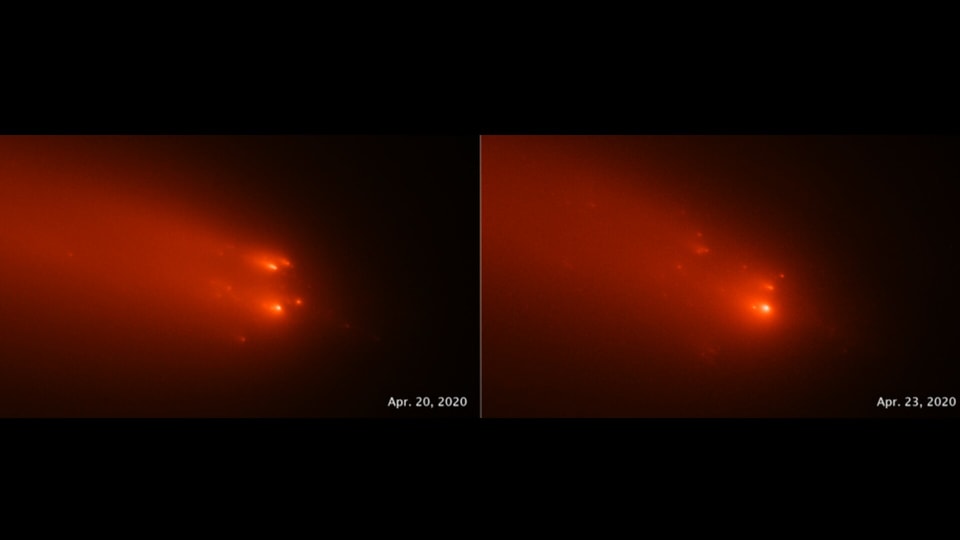Atlas might have been a fragment of an ancient comet that passed by Earth 5,000 years ago
The comet Atlas was one of the brightest comets to have zoomed past Earth.

The recent spotting of the Atlas comet by the Asteroid Terrestrial-impact Last Alert System (ATLAS) which is operated by the University of Hawaii is was a rather special event. Researchers are of the opinion that this might have been the brightest comet to have zoomed past Earth. Now, the very bright Atlas met an untimely end and disintegrated into a cascade of ice by mid-2020, but there's more to this story.
Research based on NASA's Hubble Space Telescope's observation suggests that Atlas may have been a broken fragment of an ancient comet that passed within 23 million miles of the Sun nearly 5,000 years ago. This study was conducted by astronomer Quanzhi Ye of the University of Maryland in College Park, US.
So how did they manage to relate Atlas and a 5,000-year-old comet? There's another sibling in the equation that helped them. The study revealed that Atlas followed the same orbital “railroad track” that was followed by a comet seen in 1844. So it is highly possible that these two were a part of an older comet that broke into smaller parts centuries ago.
Quanzhi, who observed Atlas with Hubble, said that it was just ‘weird' because, unlike its “hypothised” parent comet, it was farther away from the Sun than Earth at a distance of over 100 million miles during the disintegration.
The bigger question is - how did Atlas manage to survive its last passage that happened 5,000 years ago? This is still a mystery to researchers because this is the first time a long-period comet family member has been seen/speculated to break up and pass closer to the Sun. Also, while analysing the comet's disintegration process, Quanzhi noticed that a part of the Atlas disintegrated within days, the others lasted for weeks.
In another paper published in the Astronomical Times, Quanzhi concluded that this deviation in the disintegration happened because Atlas' nucleus was far stronger than the other parts of it.
Catch all the Latest Tech News, Mobile News, Laptop News, Gaming news, Wearables News , How To News, also keep up with us on Whatsapp channel,Twitter, Facebook, Google News, and Instagram. For our latest videos, subscribe to our YouTube channel.
































